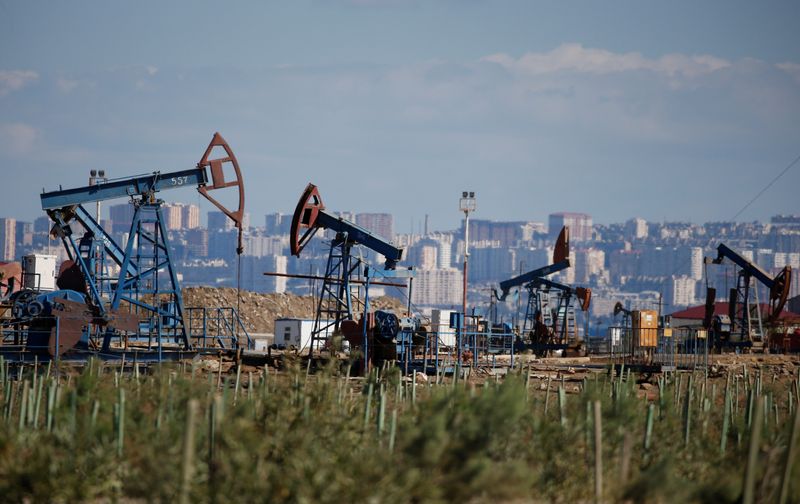By Julia Payne and Rowena Edwards
LONDON (Reuters) -Oil prices fell more than $4 on Thursday as investors focused on the prospect of a large U.S. rate hike later this month that could stem inflation but at the same time hit oil demand.
Brent crude futures for September fell by $4.05 to $95.52 a barrel by 1356 GMT and were on track to finish a third session in a row below $100.
U.S. West Texas Intermediate crude for August delivery was at $91.63 a barrel, down $4.67.
Both contracts hit lows on Thursday which were below the Feb. 23 close, the day before Russia invaded Ukraine, with Brent reaching its lowest since Feb. 21.
Oil prices have tumbled in the past two weeks on recession concerns despite a drop in crude and refined products exports from Russia amid Western sanctions and supply disruption in Libya.
“Clearly, focus is now on the demand side of the oil equation. Yesterday’s weekly EIA (U.S. Energy Information Administration) report showed sizeable builds in product inventories,” Tamas Varga, analyst at PVM Oil Associates, said.
“Collateral damage of growing fears of inflation is the strong dollar, which is also bearish for oil prices. Interestingly, physical markets are still strong but the change in sentiment of financial investors is currently the dominant driving force.”
The U.S. Federal Reserve is seen ramping up its battle with 40-year high inflation with a supersized 100 basis points rate hike this month after a grim inflation report showed price pressures accelerating. The Fed policy meeting is schedule for July 26-27.
The Fed rate hike is expected to follow a similar surprise move by the Bank of Canada on Wednesday.
Investors also flocked to the dollar, often seen as a safe haven asset. The dollar index hit a 20-year high on Wednesday, which makes oil purchases more expensive for non-U.S. buyers. [USD/]
In Europe, signals were also bearish for demand with the European Commission cutting its economic growth forecast and raising the expected inflation rate to 7.6%.
Worries of COVID-19 curbs in multiple Chinese cities to rein in new cases of a highly infectious subvariant have also kept a lid on oil prices.
China’s daily crude oil imports in June sank to their lowest since July 2018, as refiners anticipated lockdown measures to curb demand, customs data showed on Wednesday.
Data from the U.S. Energy Information Administration also point to slackening demand, with product supplied slumping to 18.7 million barrels per day, the lowest since June 2021. Crude inventories rose, bolstered by another big release from strategic reserves.
U.S. President Joe Biden will on Friday fly to Saudi Arabia, where he will attend a summit of Gulf allies and call for them to pump more oil.
However, spare capacity at the Organization of the Petroleum Exporting Countries is running low, with most of the producers pumping at maximum capacity, and it is unclear how much extra Saudi Arabia can bring into the market quickly.

Source:reuters

